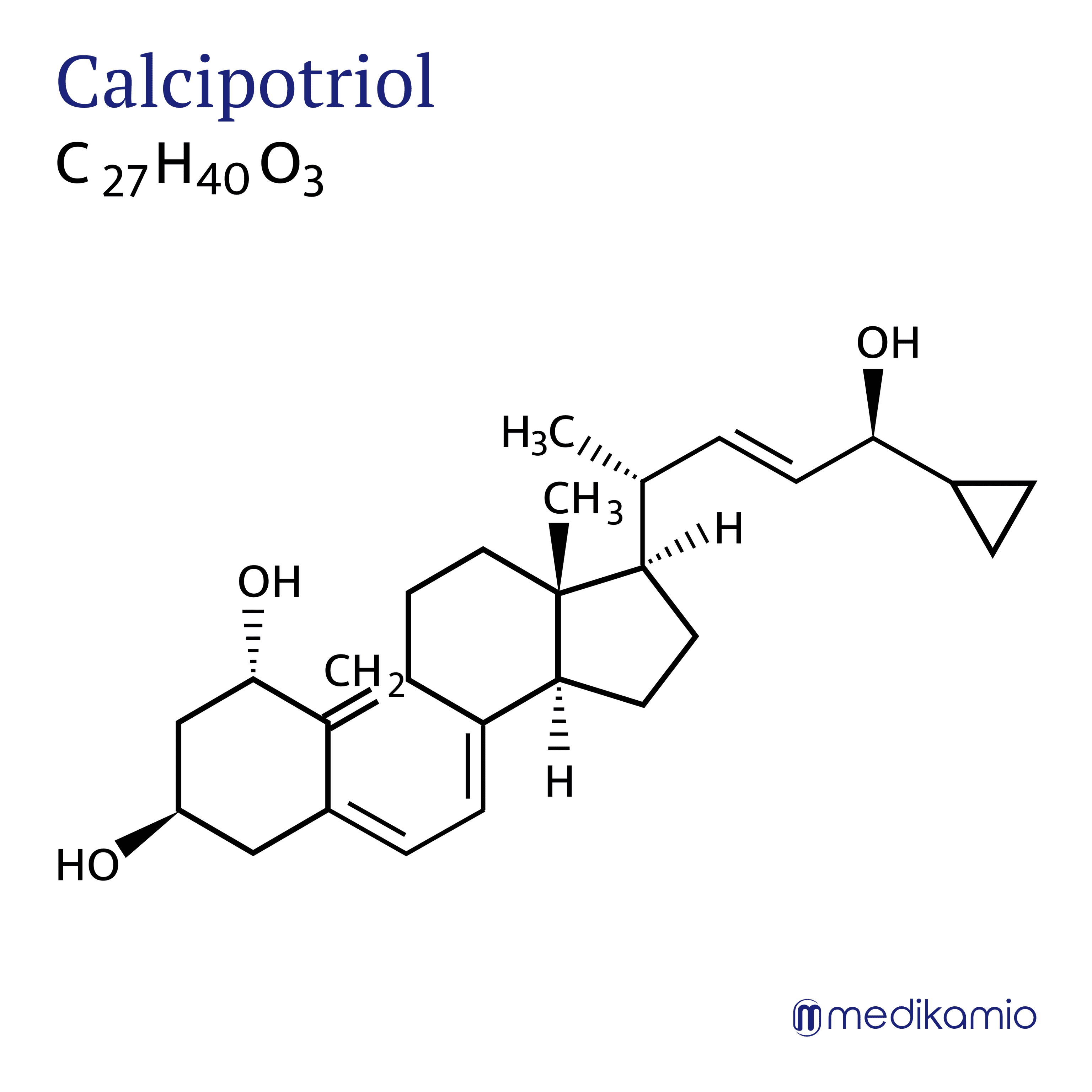Basics
Calcipotriol has an anti-inflammatory effect and is used to treat chronic plaque psoriasis (psoriasis vulgaris) on the scalp. Calcipotriol is produced synthetically and is a derivative of calcitriol (vitamin D). Calcipotriol therefore belongs to the group of vitamin D3 derivatives. Calcipotriol is applied to the skin as a cream (topical application), either alone or combined with the active ingredient betamethasone, which also has an anti-inflammatory effect.


